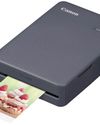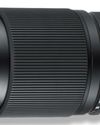Intentar ORO - Gratis
TOP TIPS FOR USING FILTERS
Photography week
|April 07, 2022
Mike Harris passes on some tips that will help you to use your lens filters to their full potential

BEFORE

AFTER
30 MINS
If you've mastered basic exposure settings and are looking to take your photography to the next level, consider investing in a few filters. These thin sheets of glass or resin are placed in front of the lens in order to manipulate rays of light before they reach the camera's sensor.
The most commonly used filters are neutral density (ND), graduated neutral density (ND grad) and polarisers. ND filters block varying degrees of light to lengthen exposures, ND grads are dark at the top and clear at the bottom to balance bright skies and darker landscapes, and polarisers block polarised light, which reduces glare and boosts blue skies. Other more specialist filters are available, including mist, infrared and sunset filters.
The majority of filters are either screw-in or square – the former screw onto the front of compatible lenses, and the latter are attached via a dedicated filter holder. Note that filters can have an effect on image quality, so if you're planning to use filters regularly it's worth investing in a decent set.
Esta historia es de la edición April 07, 2022 de Photography week.
Suscríbete a Magzter GOLD para acceder a miles de historias premium seleccionadas y a más de 9000 revistas y periódicos.
¿Ya eres suscriptor? Iniciar sesión
MÁS HISTORIAS DE Photography week

Photography week
CALIBRATE YOUR COLOURS
James Paterson reveals how he captures stunningly colourful sunsets by using this secret weapon
1 min
September 26, 2024

Photography week
ABSTRACT PORTRAITS
Mike Harris shows you how to use slow shutter speeds and multiple exposures to capture a series of motion-blur portraits
3 mins
September 26, 2024

Photography week
BREATHTAKNG IMAGES FROM ABOVE AND BELOW THE WAVES
A final hit of inspiraton: Ocean Photographer of the Year reveals stunning winning photos
1 min
September 26, 2024

Photography week
THE ULTIMATE GUIDE TO AUTUMN
James Abbott reveals the secrets to capturing amazing images during the most eye-catching season of the year
2 mins
September 26, 2024

Photography week
CANON UNVEILS NEW PORTABLE, FULLY-WIRELESS PHOTO PRINTER
The Selphy QX20 is ideal for quickly printing your smartphone snaps on the go
1 min
September 26, 2024

Photography week
FUJINON GF120MM F4 MACRO R LM OIS WR
This powerful medium-format lens is ideally suited to extreme close-ups
4 mins
September 12, 2024

Photography week
HOW TO...CLEAN UP A SCENE WITH AI
James Paterson shows you how the AI-powered Remove Tool can revolutionise your retouching
1 mins
September 12, 2024

Photography week
SHOOT AN '80S PORTRAIT
Jason Parnell-Brookes recreates the neon look of the 1980s using torches and hollow acrylic rods
4 mins
September 12, 2024

Photography week
THE BEST MONOCHROME IMAGE OF 2024 IS A REAL CRACKER
Black and White Photo Awards announces stunning selection of winning images
1 min
September 12, 2024

Photography week
88 TIPS FOR GREAT BABY PHOTOS
From lighting to posing and pacifying, here's how you get the perfect shot
19 mins
September 12, 2024
Translate
Change font size
